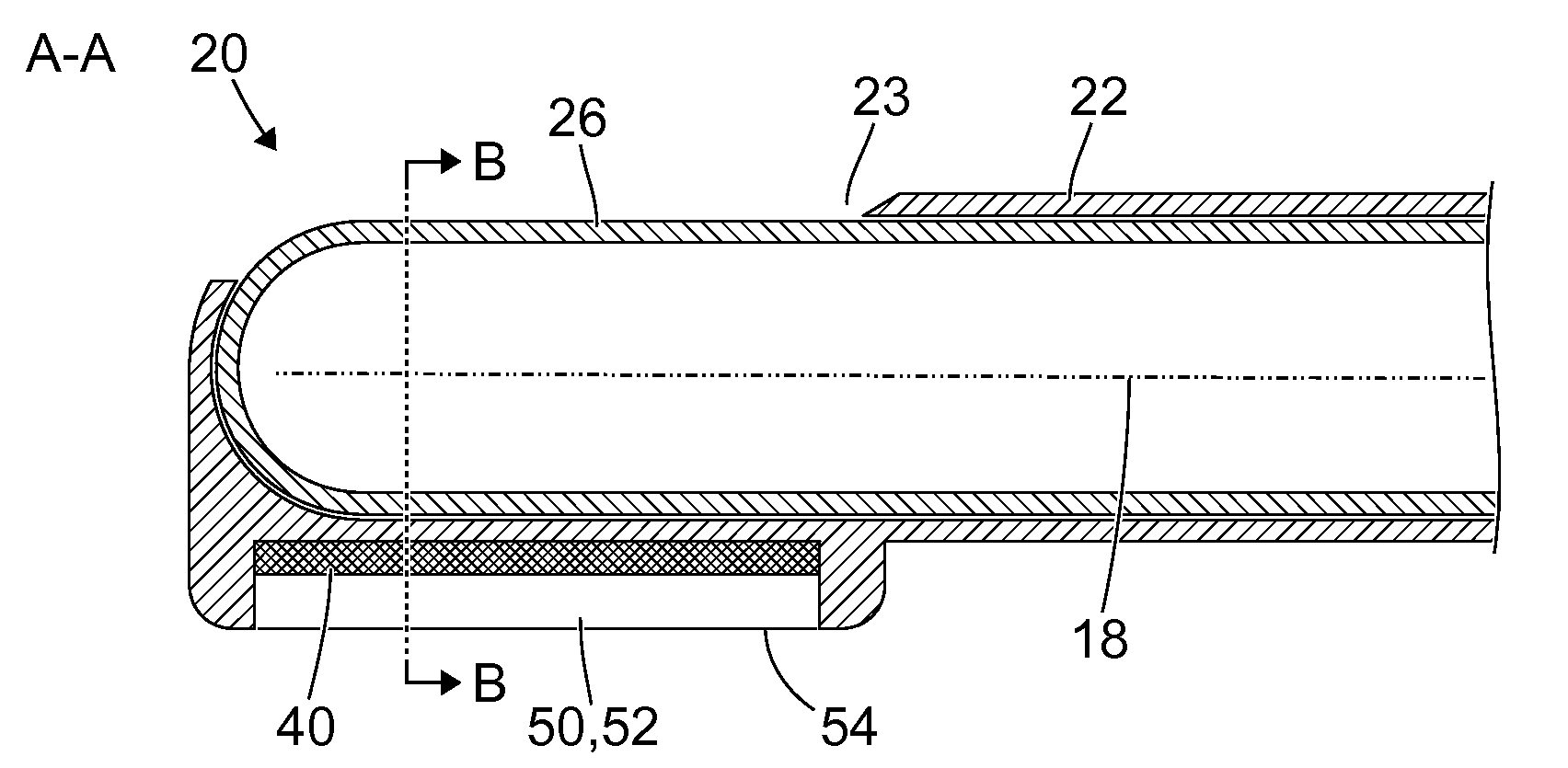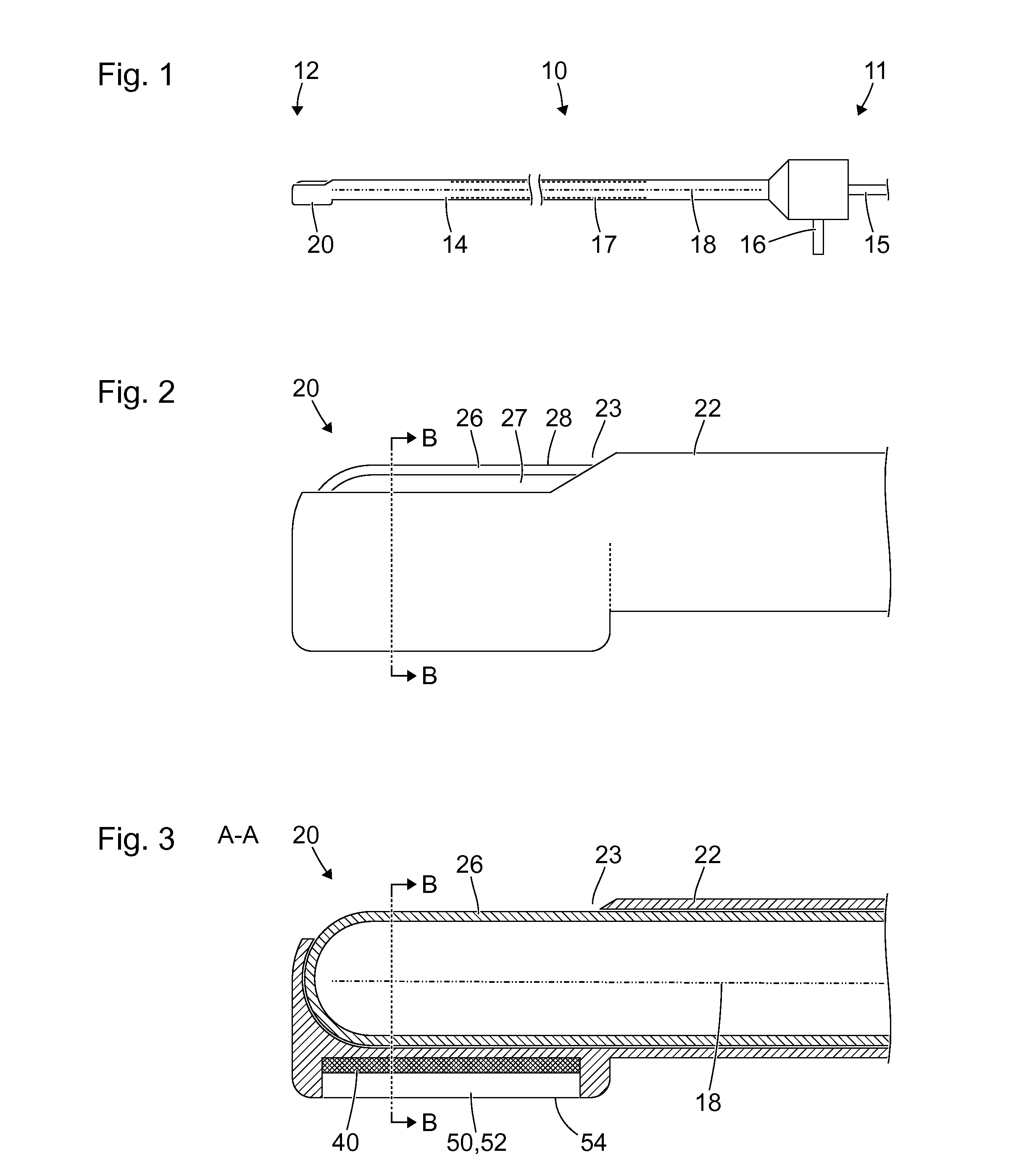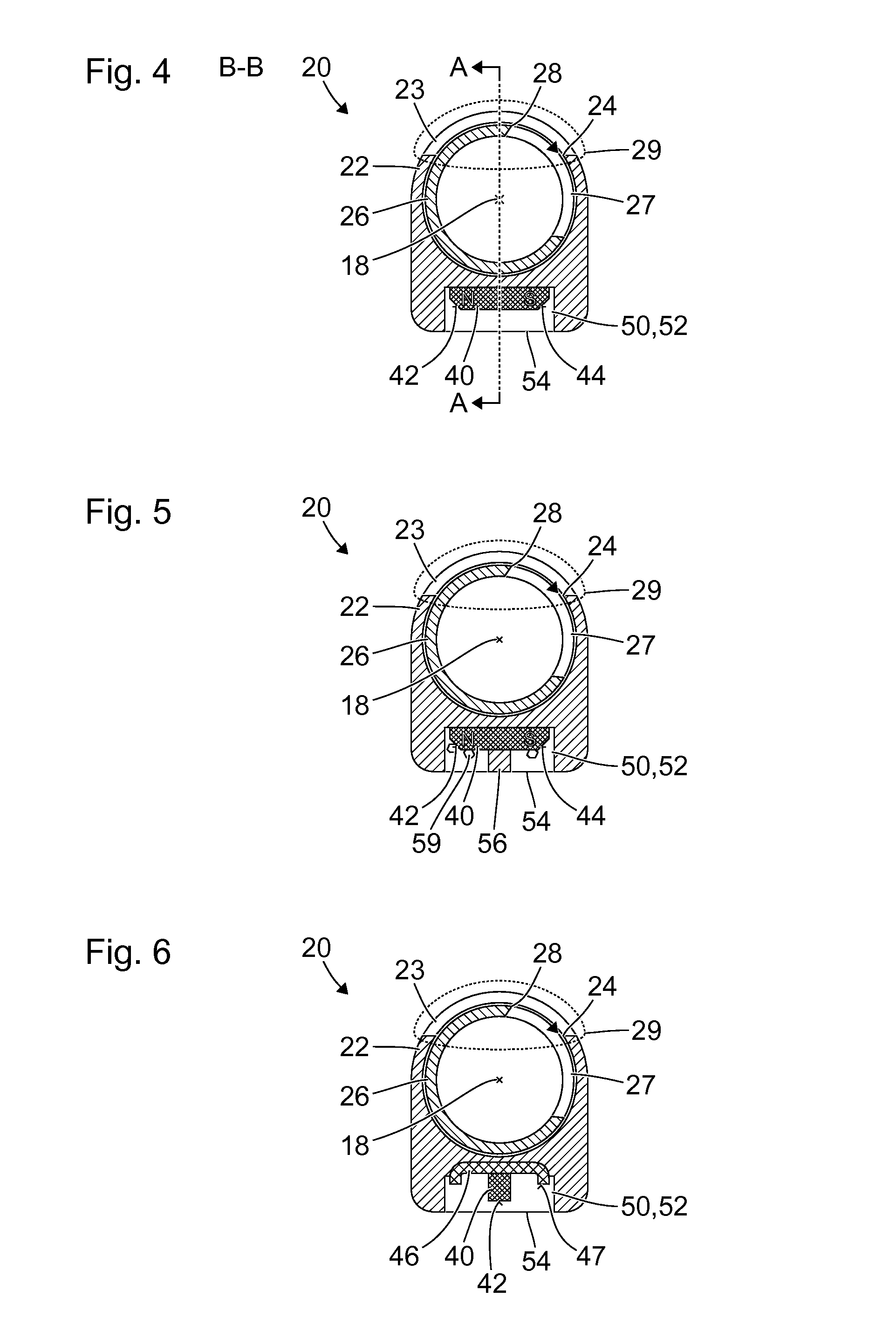Medical tool
a technology of medical instruments and tools, applied in the field of medical instruments, can solve the problems of increasing the wear of both, affecting the effect of tissue removal, so as to improve the method of tissue removal
- Summary
- Abstract
- Description
- Claims
- Application Information
AI Technical Summary
Benefits of technology
Problems solved by technology
Method used
Image
Examples
Embodiment Construction
[0065]FIG. 1 shows a schematic view of a medical instrument 10 with a proximal end 11, a distal end 12, and a shank 14 extending substantially from the proximal end 11 to the distal end 12. The shank 14 is in particular straight and rigid and has a cylindrical, in particular a circular cylindrical, lateral surface. Alternatively, the shank can be curved at least in parts and / or flexible at least in parts and / or can have a varying cross section.
[0066]A drive device 15 is provided at the proximal end 11 of the medical instrument 10. The drive device 15 is in particular a flexible shaft, or a coupling for coupling the medical instrument to a flexible shaft. By means of the flexible shaft, the proximal end 11 of the medical instrument 10 is connected or connectable to a motor, in particular an electric motor. Alternatively, the medical instrument 10 can itself have a motor at the proximal end 11, in particular an electric motor, a pneumatic motor or a hydraulic motor.
[0067]Moreover, the...
PUM
 Login to View More
Login to View More Abstract
Description
Claims
Application Information
 Login to View More
Login to View More - R&D
- Intellectual Property
- Life Sciences
- Materials
- Tech Scout
- Unparalleled Data Quality
- Higher Quality Content
- 60% Fewer Hallucinations
Browse by: Latest US Patents, China's latest patents, Technical Efficacy Thesaurus, Application Domain, Technology Topic, Popular Technical Reports.
© 2025 PatSnap. All rights reserved.Legal|Privacy policy|Modern Slavery Act Transparency Statement|Sitemap|About US| Contact US: help@patsnap.com



